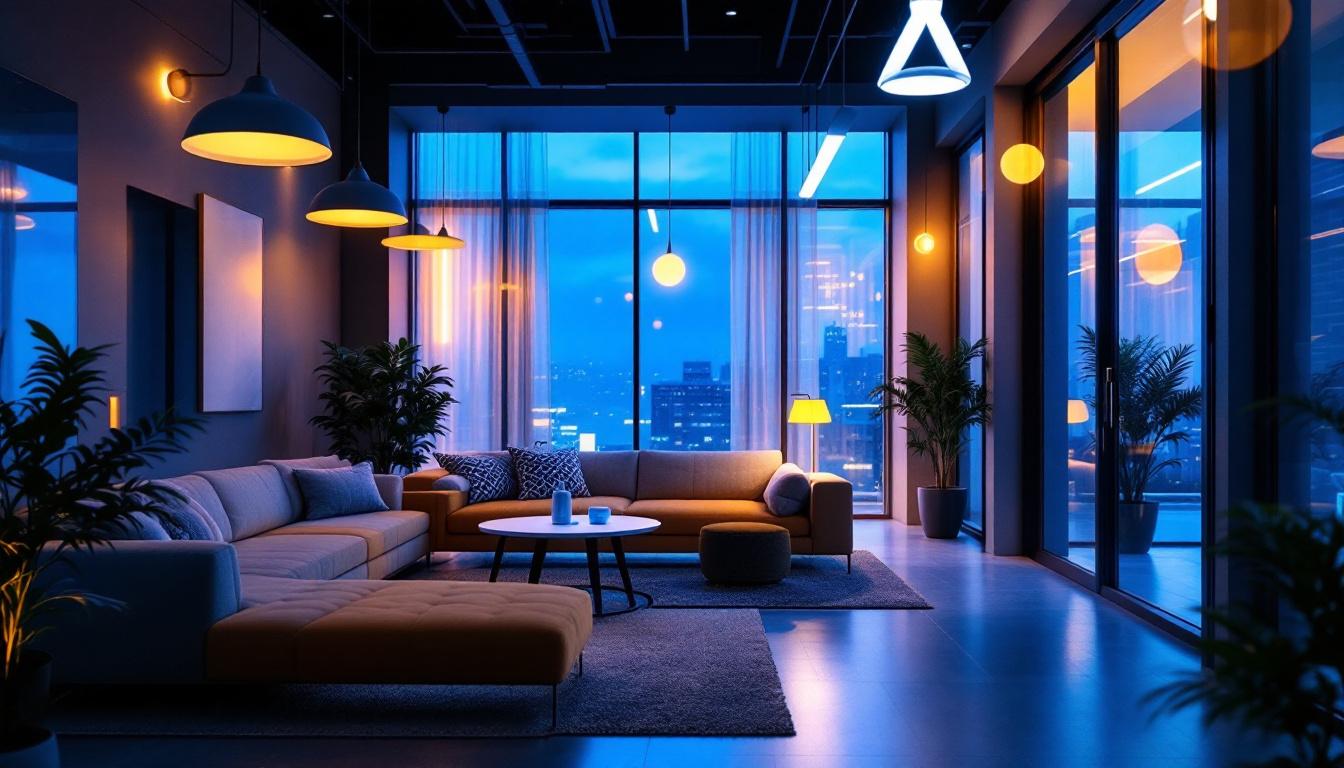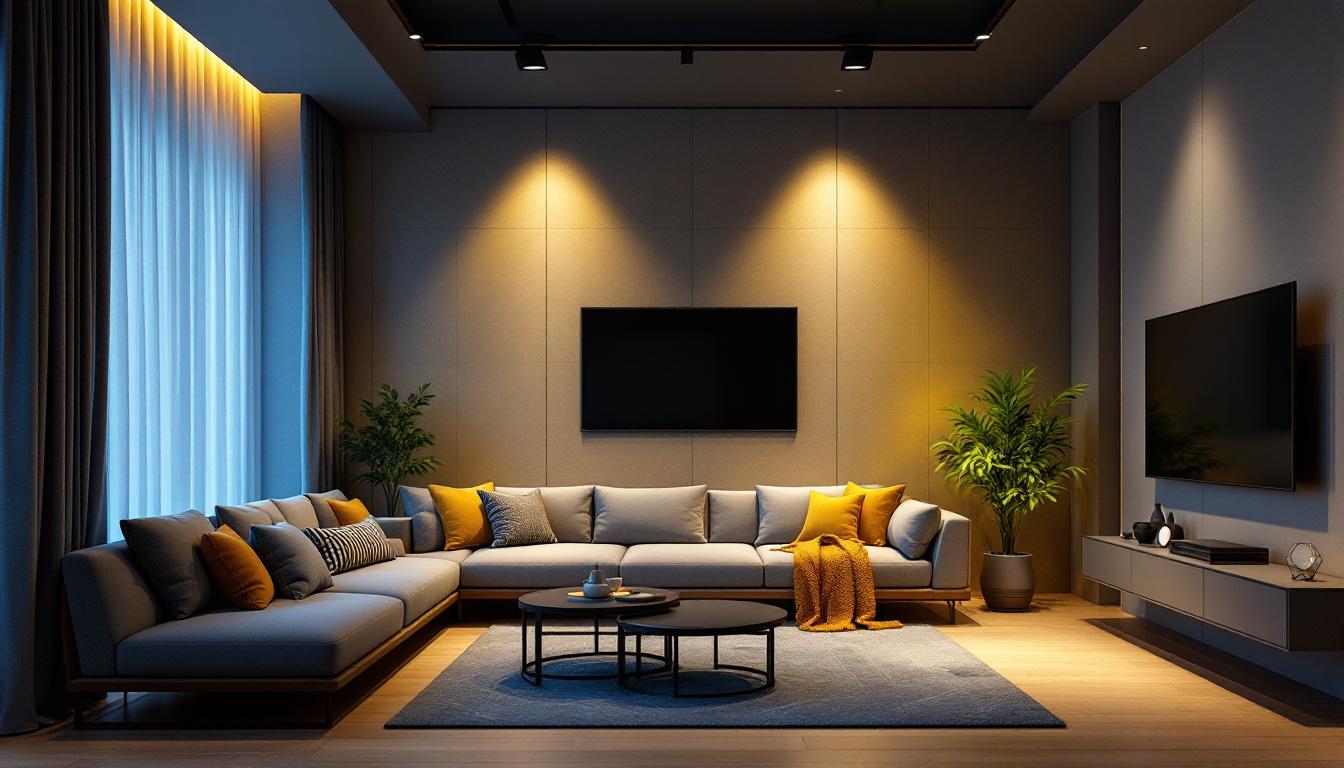
Lighting projects are essential for enhancing the aesthetics and functionality of any space. As technology continues to evolve, it becomes increasingly important for lighting contractors to consider how to future-proof their projects. One of the key aspects of future-proofing is understanding the implications of design choices, materials, and technologies. This article explores various strategies to ensure that lighting projects remain relevant and efficient for years to come.
Future-proofing is not merely a trend; it is a necessity in today’s fast-paced technological landscape. As the demand for energy-efficient solutions and smart technologies rises, lighting contractors must adapt to these changes to stay competitive. By anticipating future needs and incorporating flexible designs, contractors can avoid costly retrofits and renovations down the line.
Moreover, future-proofing lighting projects enhances sustainability. By selecting energy-efficient fixtures and systems, contractors can reduce the overall carbon footprint of their projects. This not only meets regulatory requirements but also appeals to environmentally conscious clients. The integration of sustainable practices can also lead to long-term cost savings, as energy-efficient systems often result in lower utility bills and reduced maintenance costs over time.
One of the first steps in future-proofing a lighting project is to have a thorough understanding of client needs. This involves not just the immediate requirements but also the potential for future expansions or changes in usage. Engaging clients in discussions about their long-term goals can provide valuable insights that influence design decisions.
For instance, a client might initially require a simple lighting setup for a retail space, but they may have plans to incorporate smart technology in the future. By considering these possibilities during the design phase, contractors can create a more adaptable lighting system that can easily accommodate future upgrades. Additionally, understanding the client’s brand identity and customer experience goals can guide the selection of lighting styles and technologies that resonate with their target audience, further enhancing the overall impact of the project.
The rapid advancement of lighting technology means that contractors must stay informed about the latest innovations. LED lighting has become the standard due to its energy efficiency and longevity, but the integration of smart lighting systems is gaining traction. These systems allow for greater control over lighting conditions, enhancing user experience and energy savings.
When selecting technology, it is essential to consider compatibility with existing systems and the potential for future integration. For example, using fixtures that support wireless control can make it easier to upgrade to smart systems later without significant rewiring or replacement costs. Furthermore, exploring options like tunable white lighting or color-changing LEDs can provide clients with the flexibility to adapt their lighting to different atmospheres or functions, making spaces more versatile and engaging. As the landscape of lighting technology continues to evolve, staying ahead of trends and understanding the implications of new developments can empower contractors to deliver innovative solutions that meet both current and future demands.
The design of a lighting project plays a crucial role in its longevity. A well-thought-out design not only addresses current needs but also anticipates future changes. This involves selecting versatile fixtures, adjustable mounting options, and scalable designs that can grow with the space.
Modular lighting systems offer flexibility that traditional fixed installations cannot provide. These systems allow for easy reconfiguration and expansion, making it simple to adapt to changing needs. For example, a modular system can be adjusted to accommodate new displays in a retail environment or to create different atmospheres in a restaurant setting.
Additionally, modular systems often come with interchangeable components, which can be replaced or upgraded without the need for a complete overhaul. This not only saves time and money but also minimizes waste, aligning with sustainable practices. Furthermore, the ability to customize lighting configurations means that businesses can respond quickly to seasonal changes or marketing strategies, ensuring that their environments remain dynamic and engaging for customers.
Scalability is another essential aspect of future-proofing lighting projects. Contractors should consider how a lighting system can be expanded or modified as the space evolves. This can involve selecting fixtures that can be easily added or removed, as well as ensuring that the electrical infrastructure can support additional loads.
Planning for scalability also means considering the layout and design of the space. A lighting plan that allows for easy adjustments can accommodate changes in furniture arrangement, new architectural features, or shifts in the purpose of the space. Moreover, integrating smart lighting technology can enhance scalability by allowing users to control and modify lighting settings remotely. This not only adds convenience but also enables energy-efficient practices, as users can optimize lighting based on occupancy and natural light availability, further extending the lifespan and functionality of the lighting system.
Energy efficiency is a cornerstone of future-proofing lighting projects. Not only does it reduce operational costs for clients, but it also contributes to a more sustainable environment. As energy regulations become stricter, incorporating energy-efficient solutions becomes increasingly vital. By prioritizing energy efficiency, businesses can not only comply with regulations but also enhance their corporate social responsibility, showcasing their commitment to environmental stewardship.
LED technology has revolutionized the lighting industry, offering significant energy savings compared to traditional incandescent or fluorescent bulbs. LEDs have a longer lifespan, which means less frequent replacements and lower maintenance costs. By incorporating LED fixtures into projects, contractors can help clients achieve substantial energy savings while reducing their carbon footprint. The energy consumption of LED lights is significantly lower, often using up to 75% less energy than traditional lighting, which translates into lower electricity bills and a reduced demand on power plants.
Furthermore, the versatility of LED technology allows for a wide range of applications, from ambient lighting to task lighting. This adaptability makes LEDs an ideal choice for future-proofing, as they can be used in various settings and adjusted to meet changing needs. In addition to their functional benefits, LEDs also come in a variety of colors and designs, enabling creative lighting solutions that enhance the aesthetic appeal of any space. This flexibility not only meets the practical requirements of lighting but also elevates the overall design of environments, making them more inviting and engaging.
Smart lighting solutions are becoming increasingly popular, allowing for greater control over energy usage. These systems can be programmed to adjust based on occupancy, time of day, or even natural light levels. By integrating smart technology into lighting projects, contractors can provide clients with the tools they need to manage energy consumption effectively. The integration of sensors and IoT (Internet of Things) technology means that lighting can be optimized in real-time, further enhancing energy savings and efficiency.
Moreover, smart lighting systems can enhance user experience by allowing for personalized settings and automation. For example, in a commercial setting, lighting can be adjusted to create different atmospheres for various events, all controlled through a centralized system. This level of customization not only improves the functionality of a space but also increases user satisfaction. In residential applications, smart lighting can be programmed to mimic natural light patterns, promoting well-being and comfort. As the demand for smart home technology continues to grow, incorporating these solutions into lighting projects positions contractors at the forefront of innovation in the industry.
Future-proofing lighting projects often requires collaboration with other disciplines, such as architecture, interior design, and electrical engineering. By working closely with these professionals, lighting contractors can ensure that their designs are cohesive and compatible with other systems in the space.
An integrated design approach fosters collaboration among all stakeholders, leading to more innovative and effective lighting solutions. For instance, architects can provide insights into how natural light interacts with the space, allowing lighting contractors to design systems that complement and enhance this natural light.
Additionally, involving electrical engineers from the outset can help identify potential challenges related to power supply and load management. This proactive approach can prevent costly modifications later in the project.
Gathering feedback from clients and other stakeholders throughout the design and implementation process is crucial. This iterative approach allows for adjustments based on real-time input, ensuring that the final product meets everyone’s expectations and needs.
Moreover, feedback can provide valuable insights for future projects. Understanding what worked well and what could be improved can help contractors refine their processes and designs, leading to better outcomes in subsequent projects.
Even the most well-designed lighting systems require maintenance to ensure their longevity. Future-proofing should include considerations for maintenance and upkeep, allowing clients to manage their lighting systems effectively without incurring excessive costs.
Designing lighting systems with maintenance in mind can save time and money in the long run. This can involve selecting fixtures that are easy to access for bulb replacement or cleaning, as well as ensuring that wiring and controls are positioned for easy troubleshooting.
Additionally, providing clients with clear maintenance guidelines can empower them to take an active role in caring for their lighting systems. This can include regular inspections, cleaning schedules, and tips for optimizing energy efficiency.
Offering training and support to clients can enhance their experience and ensure they are equipped to manage their lighting systems effectively. This can involve providing demonstrations on how to use smart lighting controls, as well as offering ongoing support for troubleshooting and maintenance.
By fostering a strong relationship with clients and providing them with the tools they need, contractors can enhance customer satisfaction and encourage repeat business.
Future-proofing lighting projects is essential for contractors looking to thrive in an ever-evolving industry. By understanding client needs, selecting the right technologies, and designing for longevity, contractors can create lighting systems that remain relevant and efficient for years to come.
Incorporating energy-efficient solutions, collaborating with other disciplines, and considering maintenance needs are all critical components of a successful future-proofing strategy. By embracing these principles, lighting contractors can ensure their projects not only meet current demands but also adapt to future challenges and opportunities.
Ultimately, the goal is to create lighting solutions that enhance the spaces they illuminate while being mindful of sustainability and efficiency. With careful planning and a forward-thinking mindset, lighting contractors can lead the way in shaping the future of the industry.
Ready to elevate your lighting projects and stay ahead of the curve? At LumenWholesale, we provide the cutting-edge, spec-grade lighting products you need to future-proof your designs. With unbeatable wholesale prices and no middleman markups, we ensure you get the best value for high-quality lighting. Our extensive selection adheres to the highest industry standards, guaranteeing reliable and efficient performance for any project. Plus, with free shipping on bulk orders, you can secure premium lighting solutions without the worry of hidden fees. Don’t compromise on quality or cost—choose LumenWholesale for a seamless blend of excellence and affordability. Start browsing our collection today and take the first step towards future-proof, sustainable lighting solutions. Wholesale Lighting at the Best Value.

Discover why solar lighting is becoming a crucial choice for lighting contractors in patio design.

Discover the critical role of UV ray light in modern lighting solutions.

Discover how reces lights are revolutionizing the lighting industry with their innovative design and energy efficiency.

Discover the essentials of Wobble Light technology in just five minutes! Perfect for lighting contractors, this article breaks down the benefits, applications, and setup tips of these innovative, durable lighting solutions..